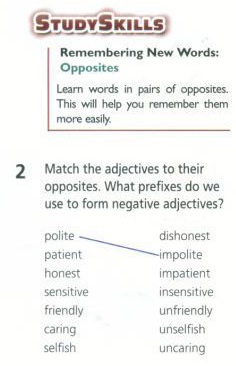For more tips and advice about CELTA, click here.
Learning Strategies
Join my telegram channel for teachers.
In previous sessions we’ve looked at different learner preferences. In this session, we consider the different strategies students employ to learn English.
As we have discussed previously, all learners bring different abilities, experiences and ideas to the classroom. Because of this, students develop their own unique mix of strategies that they use. As teachers, we can help students to identify the strategies that they are already using which are working, and to remedy or replace strategies which are not so effective. However, we should bear in mind that what works for one student may not work for another.
Introduction
Read the comments from 4 students about their strategies. What aspect of their language will these develop? Why might these strategies be helpful?
1. While watching TV programmes or films in English, I try to copy some of the phrases I hear.
3. I write new words on post-it notes and stick them to items at home which I associate with them.
2. I always try to speak to new people in English, even if I know they speak my language.
4. If I read a word I don’t know, I read to the end of the paragraph and try to guess what it means.
- The student is working on their pronunciation and memorising phrases. Imitating good speakers will help the student to sound more natural while repetition helps memory.
- The student is talking about speaking. Students often need to overcome a confidence barrier.
- This is about vocabulary. Associations can help us to remember.
- The student is talking about encountering new vocabulary when reading. Reading fluently may mean not understanding all of the details, while the effort expended in understanding new words aids memory.
Identifying Learner Strategies
Many English coursebooks include some activities which are designed to help students develop good learning strategies. One common area covered by coursebooks is learning and recording new vocabulary.
Look at the three activities below from coursebooks. What strategies do they propose? What other strategies can you think of for learning or remembering new vocabulary?

Above: (1) Upstream Pre-Intermediate, Express Publishing
Right: (2) Outcomes Intermediate, Cengage

Below: (3) New Opportunities Beginner, Pearson Longman

- The strategy suggested here is to learn words in pairs of opposites. This does potentially help learners double the number of words they can retain. Further, associations between words are being remembered.
- In this activity, the coursebook instructs students to look for chunks in new texts. Although this is an intermediate book, this is a useful strategy from the lowest levels.
- This activity encourages students to keep a vocabulary book to record the new vocabulary that they learn.
- Making and revising flashcards;
- Writing several sentences with the new vocabulary;
- Swap a list of words with a friend and test each other.
Other Learner Strategies
Strategies to help students learn new vocabulary are just one set of learning strategies we might want to build in the classroom. One classification of learner strategies we might use is:
- Memory strategies, such as those we have thought about already;
- Cognitive strategies, which help students to understand language they are presented with;
- Compensation strategies, which help students to get around what they don’t know;
- Metacognitive strategies, which help students to understand and create their ideal learning environment;
- Affective strategies, which help students to feel positive about learning;
- Social strategies, which involve students interacting and making use of others.
Cognitive strategies include making comparisons with the first language (L1), using a dictionary, reading for specific details, applying rules to a new situation (e.g. using affixes to decode a new word).
Compensation strategies can include using non-verbal communication, using context to guess meaning, code-switching/translanguaging (using L1), circumlocution (talking around the word).
Metacognitive strategies include making a plan or routine for learning, finding a quiet place to study, noticing errors and gaps in knowledge, noticing progress.
Affective strategies include having a reward, noticing stress level and removing stress barriers, feeling positive about taking risks.
Social strategies include seeking correction from others, learning about culture, seeking out partners to practice, asking questions to keep interactions going.

